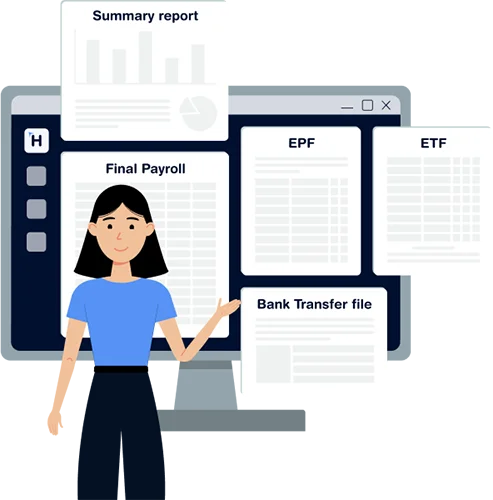Every SME in Sri Lanka understands the value of a reliable team, but without visibility into who’s available and when, even the best teams struggle to perform. Whether you’re scheduling shifts, planning projects, or managing client work, team availability tracking plays a critical role in ensuring smooth operations.
While it’s often overlooked in smaller businesses, this one feature can dramatically improve productivity, reduce conflict, and help you plan smarter. Here’s why SMEs should make it a priority.
1. Avoid Scheduling Conflicts and Resource Gaps
One of the most common headaches in workforce planning is overlapping leave, unexpected absences, or too many employees being off at the same time, especially during peak periods.
Without an availability tracking system:
- Managers may approve multiple leaves without knowing team capacity
- Shifts may be under-staffed, leading to overtime or delivery delays
- Rescheduling becomes a reactive process instead of a planned one
With an HRIS system that includes availability tracking:
- Leave calendars are visible in real time
- Overlaps and conflicts are flagged before approval
- Teams and departments are better balanced, even during busy periods
2. Improve Project and Client Scheduling
In service-based businesses, scheduling staff availability directly affects project delivery and client satisfaction. Without knowing who is available, SMEs risk:
- Overbooking resources
- Missing deadlines due to last-minute absences
- Having to reshuffle work that disrupts the entire team
Availability tracking allows businesses to:
- Allocate work based on actual availability, not assumptions
- Build timelines around real capacity
- Anticipate leave-related slowdowns in advance
This kind of planning leads to smoother project execution and happier clients.
3. Support Workload Distribution and Team Wellbeing
Availability tracking isn’t just about knowing who’s absent, it’s also about knowing who’s present too often. Without visibility, some team members may become overloaded while others are underutilised.
An HRIS that tracks team presence can:
- Highlight overworked employees based on availability patterns
- Inform managers when to rebalance tasks or offer additional support
- Encourage fair rotation of high-pressure tasks
This directly contributes to team morale, reduced burnout, and better retention.
4. Strengthen Communication and Transparency
When employees and managers can both see availability in a shared system, it reduces confusion and improves internal communication. No more ‘I didn’t know they were on leave’ or ‘Why wasn’t I informed about that schedule change?’.
With a central dashboard:
- Everyone has access to the same data
- Schedules and leave plans become collaborative
- Team members feel more informed and respected
In SMEs, where transparency often translates directly to trust, this makes a real difference.



